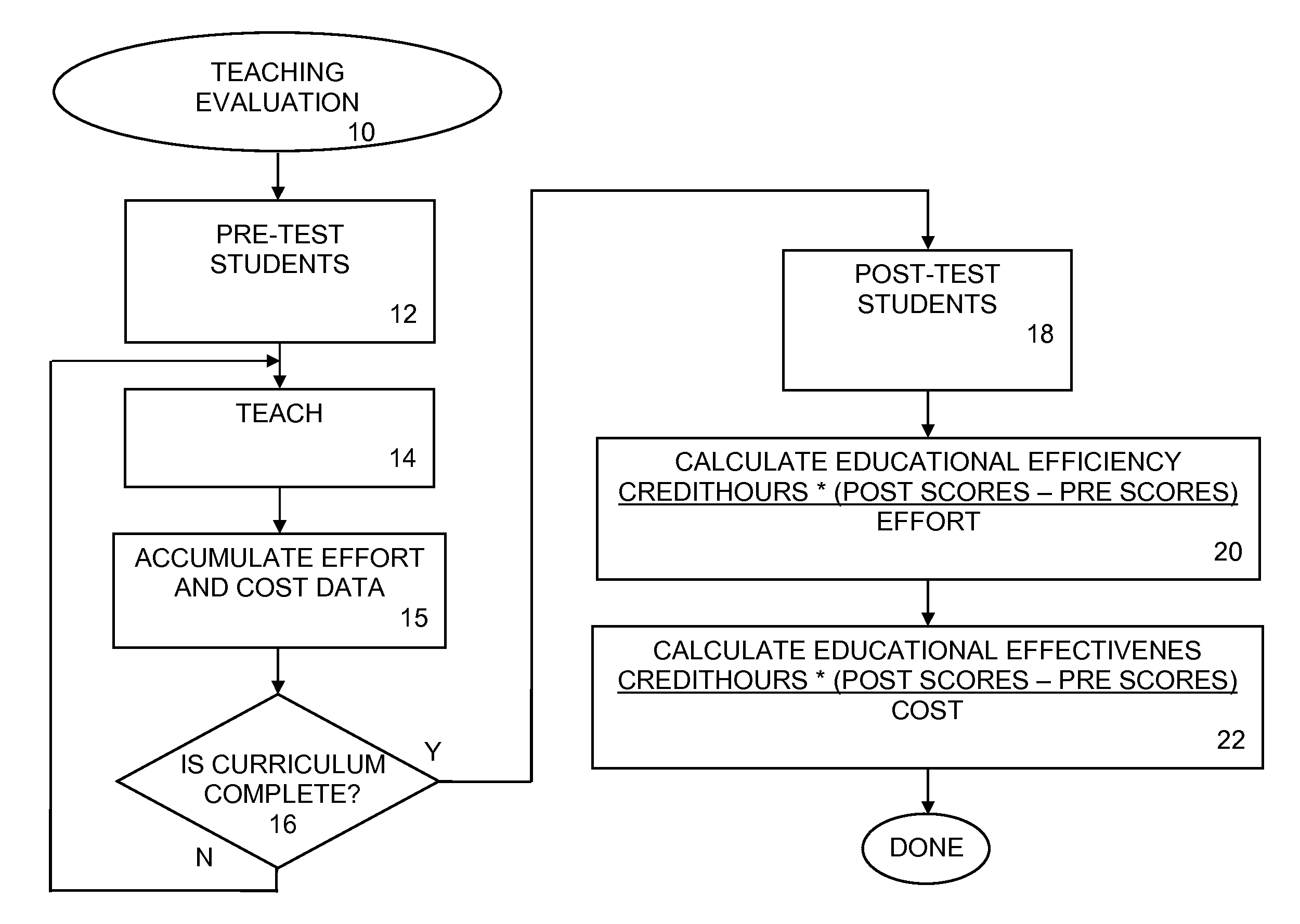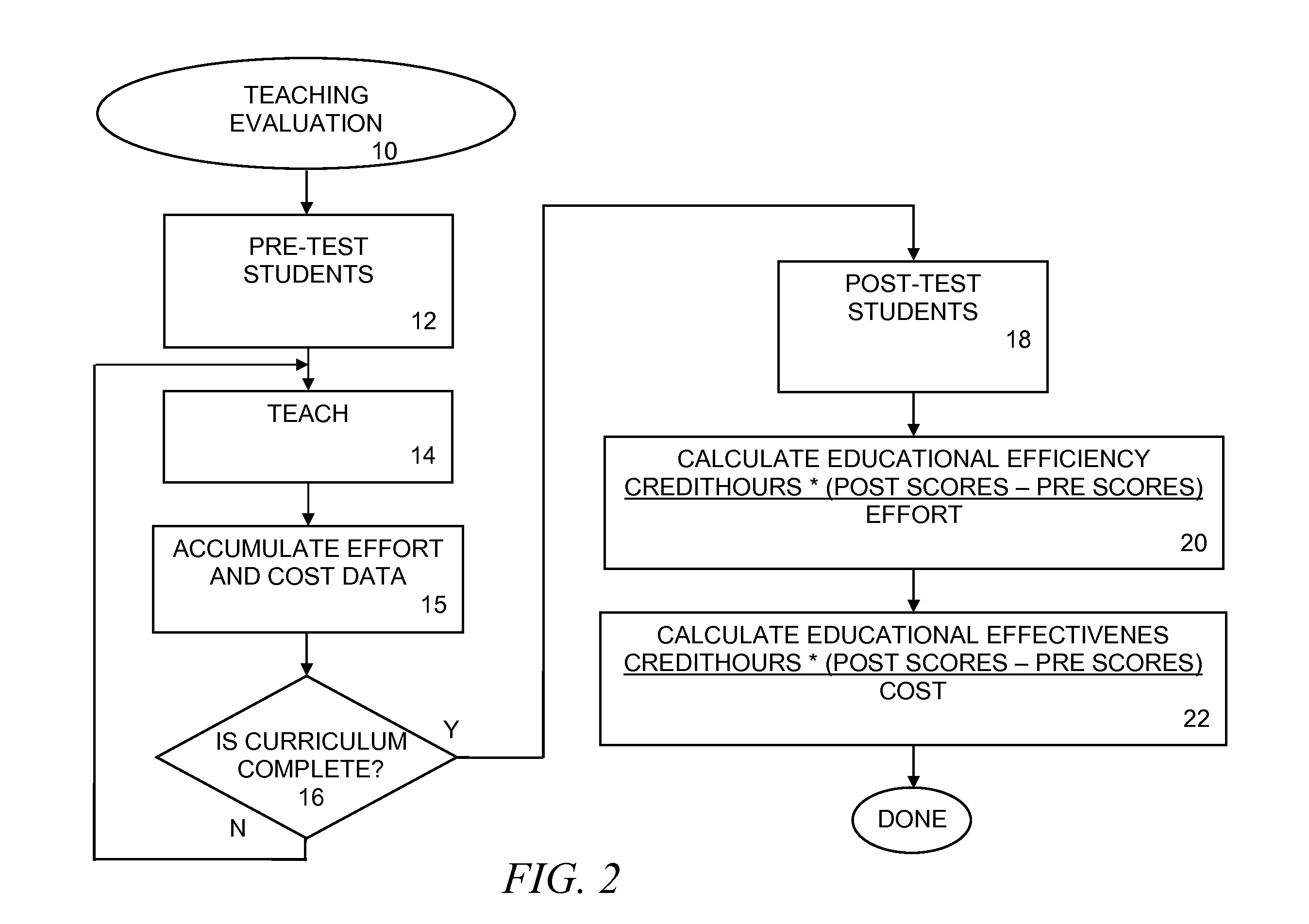Method, system, signal and program product for measuring educational efficiency and effectiveness
a technology applied in the field of teaching, can solve the problems of difficult to measure the quality of education that has occurred, difficult to predict, and difficult to measure, so as to achieve educational efficiency and effectiveness, and produce educational efficiency and effectiveness. the effect of educational efficiency and effectiveness
- Summary
- Abstract
- Description
- Claims
- Application Information
AI Technical Summary
Benefits of technology
Problems solved by technology
Method used
Image
Examples
Embodiment Construction
[0023]Reference will now be made in detail to the presently preferred embodiments of the invention, examples of which are illustrated in the accompanying drawings. Throughout the following detailed description, the same reference numerals refer to the same elements in all figures. Throughout the description, the term “course hours” represents a measurement of time spent and, in some examples, the same as “credit-hours.” Course hours is any measurement of time and the present invention produces meaningful results as long as each measurement includes the same definition of course hours.
[0024]Referring to FIG. 1, a typical computer 100 configuration of the present invention is shown. This exemplary configuration is well known in the prior art. Although shown in a much simplified configuration having a single processor, many different computer architectures are known that accomplish similar results in a similar fashion and the present invention is not limited in any way to any particula...
PUM
 Login to View More
Login to View More Abstract
Description
Claims
Application Information
 Login to View More
Login to View More - R&D
- Intellectual Property
- Life Sciences
- Materials
- Tech Scout
- Unparalleled Data Quality
- Higher Quality Content
- 60% Fewer Hallucinations
Browse by: Latest US Patents, China's latest patents, Technical Efficacy Thesaurus, Application Domain, Technology Topic, Popular Technical Reports.
© 2025 PatSnap. All rights reserved.Legal|Privacy policy|Modern Slavery Act Transparency Statement|Sitemap|About US| Contact US: help@patsnap.com



